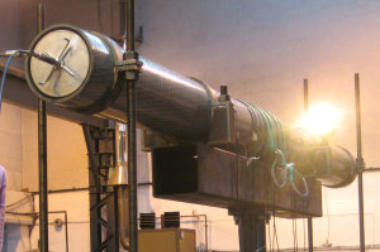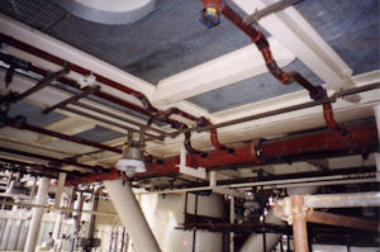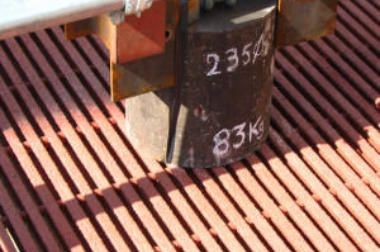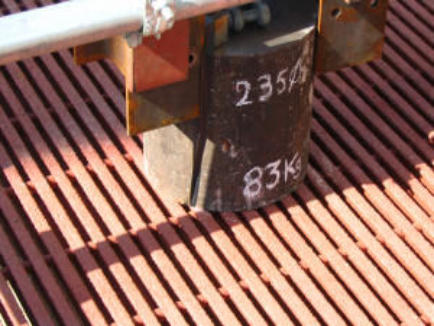
www.medlicott.eu/pmltd


FRP Applications
FRP liner JIP
Fibre Reinforced Plastic (FRP) lined steel pipes have the potential to provide large cost savings compared to conventional expensive corrosion resistant alloy (CRA) systems for downhole and flowline/pipeline applications. Philip Medlicott was project manager for the Oil States Industries (UK) Ltd (OSIUK) Joint Industry Program that was set-up to develop a methodology for qualifying fibre reinforced plastic (FRP) lined tubing and flowlines for high temperature production service. Further details are given in the following links: • FRP Liner 1 • FRP Liner 2

FRP caisson for long span applications
A specification was developed for the design and testing of a 16" diameter a carbon/glass fibre epoxy composite caisson whch could be deployed in long span applications typical of a North Sea platform. Because the design was intended to cover retrofit applications it was necessary for the caisson to incorporate a mechanical joint that would enable it to be assembed and installed offshore. The testing included both fatigue loads and static loads representative of the maximum bending loads likely to be produced in 100 year storm conditions. The picture shows the caisson being subjected to fatigue four point bend testing. .
Component specifications
Topside pipework
Philip Medlicott participated in the preparation and drafting ISO 14692, which addresses the use of Glass Reinforced Plastic (GRP) Piping (also known as fiberglass piping) in the Petroleum and Natural Gas Industries. The Standard follows the individual phases in the life cycle of a GRP piping system, i.e. from design through manufacture to operation. Each part is therefore aimed at the relevant parties involved in that particular phase. The photograph shows jet fire rated deluge pipwork in th well bay of an offshore platform.FRP gratings for topsides
A performance based specification was produced for a major oil company for the procurement. design and operation of GRP gratings for use on offshore oil platforms. The specification follows the principles given in ISO14692 described below and identified appropriate performance standards which the grating is required to comply with, including fire and static electricity. The picture shows static load testing of grating test pieces that was carried out to validate the impact test specification requirements.




medlicott.eu/pmltd

FRP Applications
FRP liner JIP
Fibre Reinforced Plastic (FRP) lined steel pipes have the potential to provide large cost savings compared to conventional expensive corrosion resistant alloy (CRA) systems for downhole and flowline/pipeline applications. Philip Medlicott was project manager for the Oil States Industries (UK) Ltd (OSIUK) Joint Industry Program that was set-up to develop a methodology for qualifying fibre reinforced plastic (FRP) lined tubing and flowlines for high temperature production service. Further details are given in the following links: • FRP Liner 1 • FRP Liner 2

FRP caisson for long span
applications
A specification was developed for the design and testing of a 16" diameter a carbon/glass fibre epoxy composite caisson whch could be deployed in long span applications typical of a North Sea platform. Because the design was intended to cover retrofit applications it was necessary for the caisson to incorporate a mechanical joint that would enable it to be assembed and installed offshore. The testing included both fatigue loads and static loads representative of the maximum bending loads likely to be produced in 100 year storm conditions. The picture shows the caisson being subjected to fatigue four point bend testing. .
Component specifications
Topside pipework
Philip Medlicott participated in the preparation and drafting ISO 14692, which addresses the use of Glass Reinforced Plastic (GRP) Piping (also known as fiberglass piping) in the Petroleum and Natural Gas Industries. The Standard follows the individual phases in the life cycle of a GRP piping system, i.e. from design through manufacture to operation. Each part is therefore aimed at the relevant parties involved in that particular phase. The photograph shows jet fire rated deluge pipwork in th well bay of an offshore platform.FRP gratings for topsides
A performance based specification was produced for a major oil company for the procurement. design and operation of GRP gratings for use on offshore oil platforms. The specification follows the principles given in ISO14692 described below and identified appropriate performance standards which the grating is required to comply with, including fire and static electricity. The picture shows static load testing of grating test pieces that was carried out to validate the impact test specification requirements.













